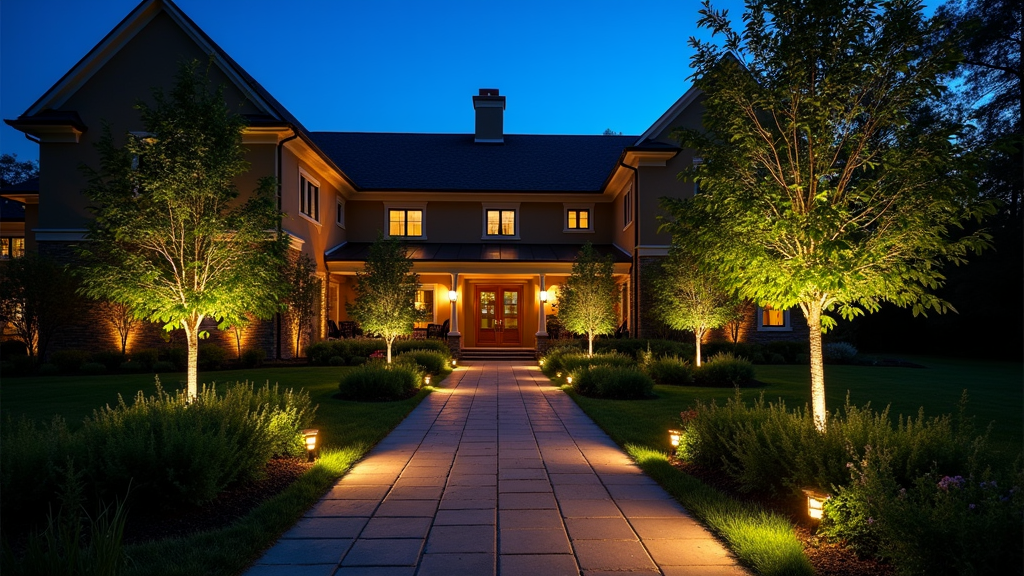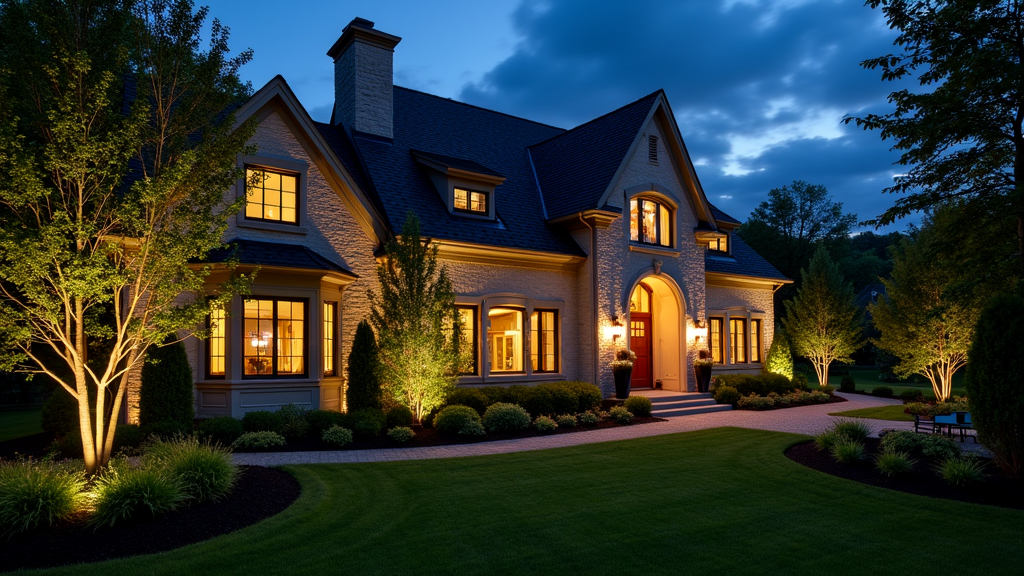Introduction
In today’s rapidly changing world, the demand for sustainability resonates across various industries, including landscape design. As urban areas continue to expand and environmental concerns grow, the concept of sustainable hardscaping has emerged as a pivotal element in designing landscapes that are not only visually appealing but also environmentally responsible. Sustainable hardscaping solutions focus on the balance between built environments and nature, offering innovative ways to integrate functionality with aesthetics while minimizing ecological impact.
This article will delve deep into the realm of Sustainable Hardscaping Solutions in Modern Landscape Design. We will explore the principles of sustainable hardscaping, innovative materials and techniques, practical applications, case studies, benefits, challenges, and much more. So grab a cup of coffee and settle in as we embark on this exploration of sustainable practices that enhance our outdoor spaces!
Sustainable Hardscaping Solutions in Modern Landscape Design
Sustainable hardscaping refers to the practice of using eco-friendly materials and design techniques to create durable outdoor spaces that harmonize with their natural surroundings. The fundamental principle lies in reducing harmful environmental impacts while promoting biodiversity and water conservation.
What is Hardscaping?
Hardscaping involves the non-plant elements of landscape design, including pathways, patios, retaining walls, decks, fences, and other structures that add functionality to outdoor areas. Unlike softscapes that involve plants and soil composition, hardscapes focus on durable materials like stone, concrete, wood, metal, brick or gravel.
The Role of Hardscaping in Landscape Design
Hardscaping plays a crucial http://damienfoxj509.huicopper.com/planning-an-outdoor-kitchen-essential-landscaping-considerations-for-greensborosce role in landscape design for several reasons:
Functional Spaces: It creates usable outdoor areas for relaxation or entertainment. Erosion Control: Properly designed hardscape features help manage stormwater runoff. Aesthetic Appeal: Elements like paving stones or decorative walls can enhance visual interest.Why Choose Sustainable Hardscaping Solutions?
Building on traditional hardscape methods often leads to negative environmental impacts such as stormwater runoff pollution or habitat destruction. Choosing sustainable solutions aligns with modern ecological standards that prioritize environmental responsibility.

Benefits of Sustainable Hardscaping:
- Reduces carbon footprint Promotes biodiversity Enhances water retention Improves air quality
Innovative Materials for Sustainable Hardscaping
Recycled Materials
Using recycled materials is one effective way to implement sustainable hardscaping solutions. This can include reclaimed wood, recycled concrete pavers, or repurposed bricks which not only save resources but also add character to your landscape.
Advantages of Recycled Materials:
- Cost-effective Unique aesthetic appeal Reduced environmental impact
Permeable Pavers
Permeable pavers allow water to infiltrate through the surface rather than running off into storm drains. These types of pavers reduce flooding risks and promote groundwater recharge.
Key Features:
- Excellent drainage capabilities Various style options available Environmentally friendly
Sustainable Landscaping Techniques for Hardscape Design
Rain Gardens
Integrating rain gardens into your hardscape can significantly improve water management on your property by capturing and filtering rainwater runoff.
Steps to Create a Rain Garden:
Identify a suitable location. Dig a shallow depression. Select native plants for better absorption. Incorporate rocks or gravel for additional drainage.Xeriscaping Principles
Xeriscaping focuses on designing landscapes that require minimal irrigation by utilizing drought-tolerant plants alongside strategic hardscape elements like gravel paths.
Benefits of Xeriscaping:
- Low maintenance requirements Water conservation Enhanced biodiversity
Designing Landscapes with Purpose
Creating Functional Outdoor Spaces
When designing landscapes with hardscape elements, consider how people will interact with these spaces. Will they relax there? Host gatherings? Important questions like these guide effective layout planning.
Tips for Functional Design:
- Define social zones (e.g., dining area). Use pathways to connect different sections seamlessly. Consider sun exposure when placing seating areas.
Case Studies in Sustainable Hardscaping Solutions
Urban Park Revitalization Project
One remarkable example is an urban park revitalization project where recycled materials were used throughout the landscape design process—from benches made from reclaimed wood to permeable walkways crafted from reused bricks.
Outcomes:
This project not only beautified the area but also improved local wildlife habitats while engaging community members through educational workshops on sustainability practices.
Residential Backyard Transformation
Another case study involved transforming a typical suburban backyard into an oasis utilizing permeable pavers and native planting beds designed around existing trees.
Results:
Homeowners enjoyed reduced flooding during heavy rains while enhancing their home’s curb appeal—all thanks to thoughtful sustainable practices in their landscaping efforts!
Challenges Facing Sustainable Hardscaping Practices
While there are numerous benefits associated with implementing sustainable hardscaping solutions within modern landscape design practices; challenges persist as well:
1. Higher Initial Costs
Eco-friendly materials may have higher upfront costs compared to traditional options; however they often pay off over time through durability and reduced maintenance needs.
2. Limited Availability of Resources
Depending on location; sourcing specific recycled materials or permeable products might pose challenges; therefore it’s vital to research local suppliers beforehand!
FAQ Section
What is the concept behind sustainable hardscaping?
Sustainable hardscaping emphasizes using eco-friendly materials and designs that harmonize with nature while minimizing negative environmental impacts during construction and use phases.
How does one start implementing sustainable practices in their landscape design?
Begin by researching local suppliers for recycled or permeable materials; assess your property's unique conditions (like water drainage) before planning layouts accordingly—then incorporate native plantings alongside functional structures!
Are permeable pavers efficient?
Yes! Permeable pavers effectively allow rainwater infiltration which reduces stormwater runoff—making them an excellent choice for sustainable hardscape solutions within landscape designs!
Can I use recycled concrete in my patio design?
Absolutely! Recycled concrete offers durability while providing unique aesthetic characteristics—and it’s environmentally responsible too!

How do rain gardens fit into my overall landscape plan?
Rain gardens capture excess stormwater runoff from impervious surfaces (like driveways) so incorporating one strategically can improve drainage issues around your property while enhancing its visual appeal!
Is xeriscape gardening expensive?
While initial setup costs may be higher due primarily to selecting drought-resistant plants—long-term savings occur through reduced irrigation requirements thus making xeriscape gardening cost-effective over time!
Conclusion
As we’ve explored throughout this article on Sustainable Hardscaping Solutions in Modern Landscape Design; embracing sustainability isn't merely an option—it’s essential! From choosing innovative materials like recycled products or permeable pavers all promoting eco-friendliness—to implementing strategic techniques such as rain gardens or xeriscapes—the choices we make today have lasting impacts tomorrow!
So whether you’re reimagining your own backyard sanctuary or spearheading larger community projects—the realm of sustainable landscaping awaits you filled with endless possibilities just waiting to be discovered! Together let’s build greener landscapes that inspire both beauty AND responsibility!
